Linnaeus northern: an amazing medicinal plant
Linnaeus northern is a wild plant. It grows in cool, humid regions. Linnaeus can be grown independently in order to obtain a valuable medicinal plant.
Content
- Description and distribution of northern linnea
- Linnaeus cultivation
- The healing properties of the plant
Description and distribution of northern linnea
Linnaeus north is shrub plant... It grows in large numbers in the alpine zone, spruce mossy forests and tundra, more common in North America, Asia and Europe. You can also find linnea on the territory of Russia, for example, in the north of the European part, in Siberia, in the Far East and the North Caucasus, on Sakhalin, the Kuril Islands.
The most favorable conditions for its growth are dark, shady coniferous forests, less often deciduous ones.
Northern Linnaeus has several other names:
- Abdomen.
- Spectacular grass.
- Mad grass.
- Golden herb.
- Wood creeper.
- Hairy (hairy).
Linnaeus has a creeping stem, the shrub itself is low. The structure of the leaves is petiolate, they are round in shape. Each fluffy, erect, long stem has 2 flowers. The plant begins to bloom in early summer, later, in July-August, bears fruit. Propagate a plant animals and birds help. With the help of sticky bracts and small hooks, the fruits attach to the wool and feathers and thus spread.
Previously, the northern Linnaeus was part of the honeysuckle family, but after a while, scientists identified a separate family - the Linnaeus.
There are 3 more subspecies, which were previously considered separate species:
- American.
- North.
- Long-flowered.
Northern Linnaeus got its interesting name in honor of the scientist, biologist and legendary physician Karl Linnaeus. It was his favorite plant, even on the coat of arms and most of the portraits of the botanist, linnea flowers are depicted.
It is also known that Northern Linnaeus is the official plant of Småland, the Swedish province, the place where Karl Linnaeus himself grew up.
Linnaeus cultivation
After people were discovered healing properties Linnaeus northern, they began to grow it in artificial conditions.
It is successfully cultivated in the alpine mountains and rocky villages. Only the leaves of the plant are of particular value. Despite the beautiful, delicate flowers, they only have decorative value.
In May, small bell-shaped flowers with a pinkish tint appear. By the beginning of summer, they form openwork carpets on the ground near spruce forests. Blooming can last up to several weeks, this place resembles a pink cloud. But nevertheless, to decorate the garden in country houses, linnea is not used.
The height of the plant is not large, no more than 5 cm, so it is more of a background, without interfering with other plants to grow and not blocking the light with them.
It is unlikely that it will be possible to grow northern linnea on ordinary garden land, even in suitable weather conditions. In order for the plant to grow properly, you need to find moist, acidic, humus-rich soil. Speaking of wet soil, we are not talking about constant stagnation of water, just this can interfere with growth and development.
The best place for a plant is in a heather or woodland garden.
The plant does not like the sun, so it should be planted in partial shade under the crown of dense trees.The soil layer can be thin, so it will grow even on rocks that are densely covered with moss.
To artificially propagate the northern linnea, you will need roots or cuttings. In those places where the shoots are in contact with the ground, roots are formed, it is they who will need to be separated from the part of the lash. A linnea rug can grow up to 60 cm in diameter in one season.
You can also try growing linnea from seeds. The advantage is that they are easier to reach and a large area can be sown immediately. If you cannot find seeds on sale, then you can collect them yourself on the surface of the soil in places where linnea blooms. Seeds cannot be stored for a long time, so they must be planted immediately.
The healing properties of the plant
As mentioned above, northern linnea is a medicinal plant.
Its leaves are used for:
- Diuretic problems;
- Constant pain.
- Swelling of the arms and legs.
- Fever and other colds.
- Impotence.
- In addition, Linnaeus is considered a "blood purifier", its infusion helps to thin thick phlegm and relieve pain.
- Linnaeus is also used externally, making poultices out of it and applying to sore spots. It is often used for lumbar and joint pain.
- Earlier, in some regions of Russia, where the climate is appropriate, a decoction of northern linnea was drunk like ordinary tea. Now it is also used for treatment, but only in folk medicine, due to insufficient study of its properties.
There are more than 40 diseases in which the beneficial properties of linnea are used.
It is very important to collect the leaves during flowering plants... Then they need to be dried and wrapped in paper.
The simplest recipe for linnea is as follows: pour a tablespoon of chopped leaves with a glass of boiling water and pour into a thermos. You can use the broth the next day, drinking a quarter of a glass 4 times a day before meals. The course of treatment lasts a month, then it is worth taking a break for 10 days and you can repeat the treatment again.




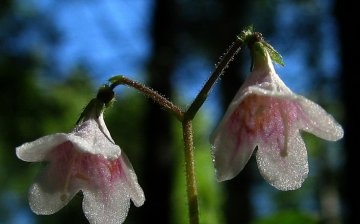
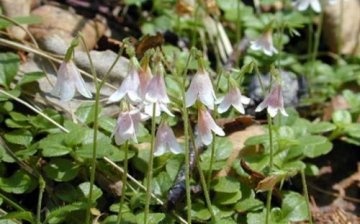
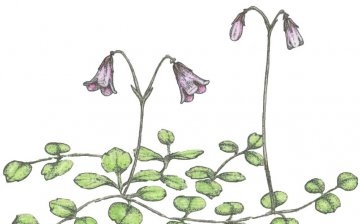




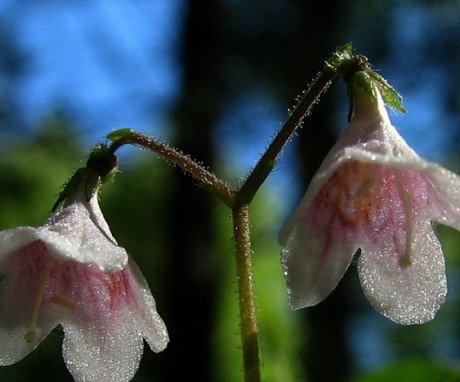
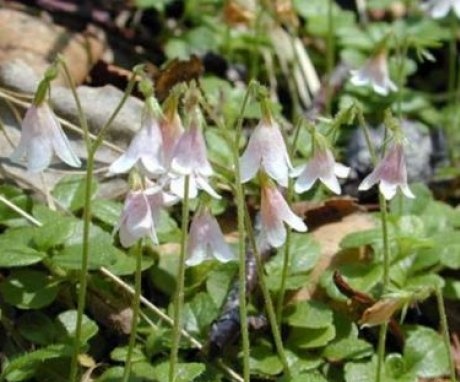
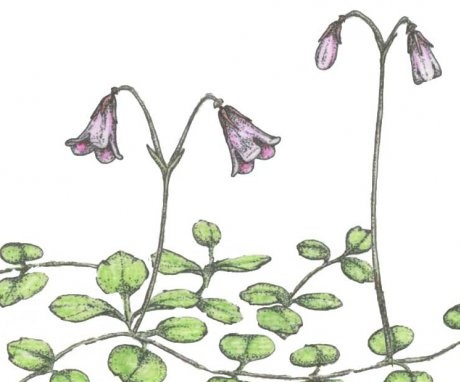
Our forest is full of such a miracle, but the flowers are so small and look beautiful only when there are a lot of them. But they have a pleasant smell - light, sweet, reminiscent of a honeycomb.